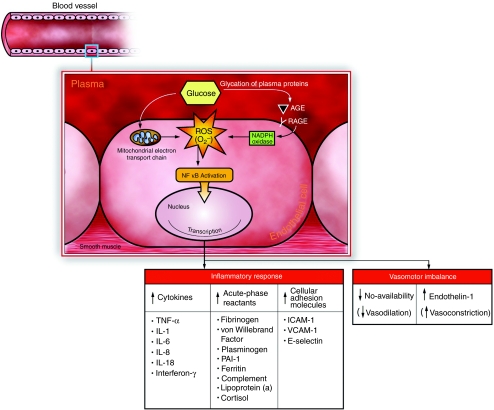Figure 1.
Glucose in the plasma undergoes non-enzymatic reaction with circulating proteins (including lipoproteins) to form AGEs. AGEs bind with RAGE on the surface of endothelial cells lining blood vessels, triggering the production of ROS, in particular super oxide anion, by NADPH oxidase. ROS are also produced as a result of glucose overload within the mitochondria. Once formed, ROS activate NFκB, which results in the transcriptional activation of genes relevant for inflammation, immunity and atherosclerosis. AGE, advanced glycation/glycoxidation endproduct; RAGE, receptor for AGE; ROS, reactive oxygen species; O2–, super oxide anion; NADPH, nicotinamide adenine dinucleotide phosphate (reduced form); NFκB, nuclear factor κB; TNF-α, tumour necrosis factor α; IL, interlukin; PAI-1, plasminogen activator inhibitor 1; ICAM-1, intercellular adhesion molecule 1; VCAM-1, vascular cell adhesion molecule; NO, nitric oxide.

